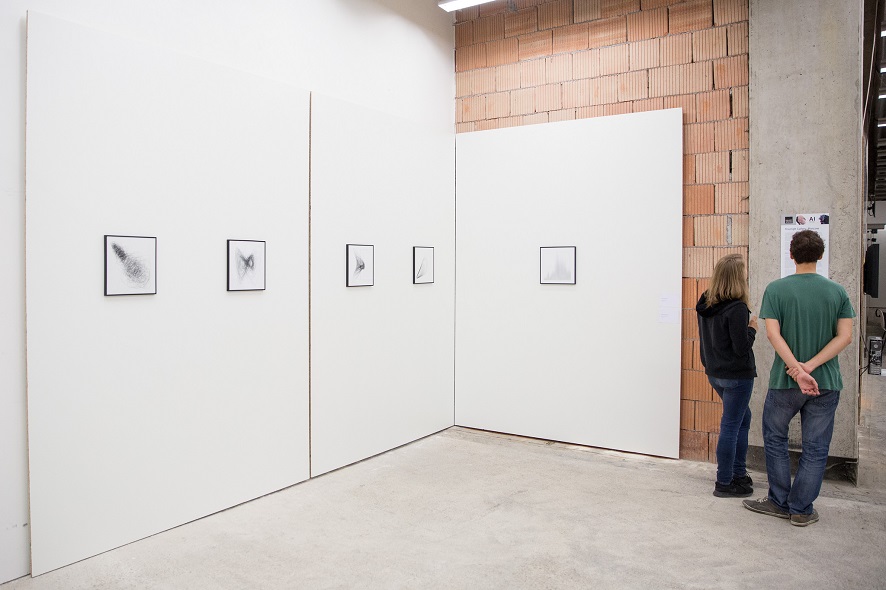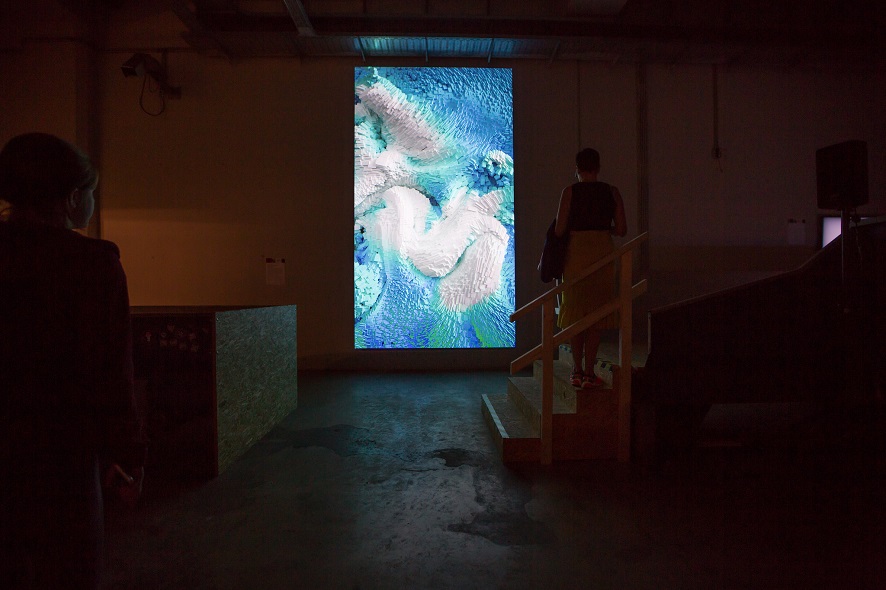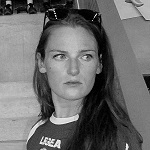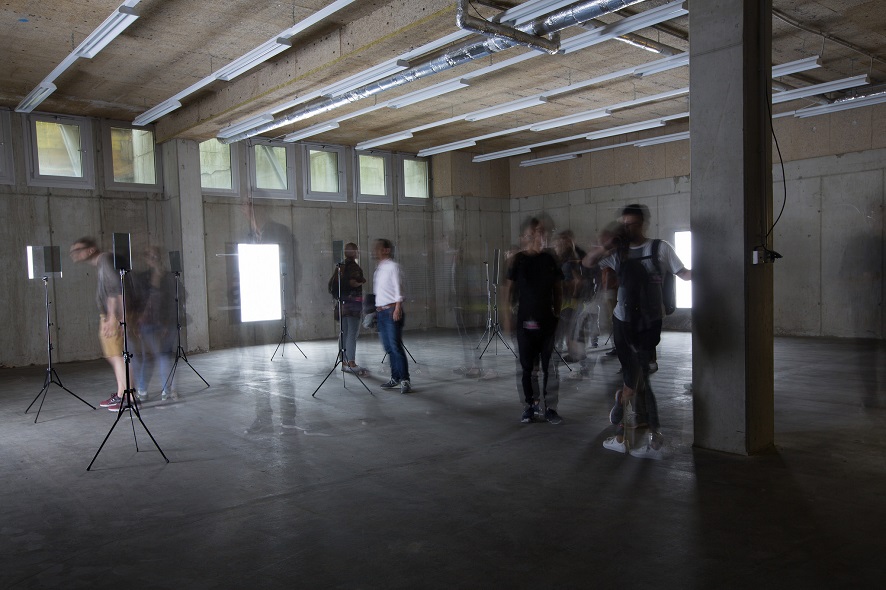Media art doesn’t always have an easy time on the traditional art market—collecting, maintaining and conserving often turn out to be difficult. In an effort to change this, the Ars Electronica Festival (September 6-10, 2018) is staging Gallery Spaces for the second year in a row as a platform for encounter and exchange. Exhibition spaces for galleries and collections and panel discussions with experts in media art and the art market will demonstrate how digital technologies are changing the art market and what it means to collect media art.
Gerfried Stocker, artistic director of Ars Electronica, and Christl Baur, project director of Gallery Spaces, provide some initial insights in this interview.
Gallery Spaces was one of the major innovations at the 2017 Ars Electronica Festival, and it’s being reprised this year. Does that mean it was successful?
Gerfried Stocker: This initiative to work together with collectors and people involved in the art market was by all means a success. First off, it’s something that’s urgently needed. Digital art has developed so rapidly; it’s the art of our time; its presence is pervasive, and it has long since become a matter of interest to galleries and collectors. We at Ars Electronica have something like an obligation to serve as a platform in this connection. There are numerous incredibly important issues that have to be discussed on several levels. How are they being dealt with by artists, gallery owners, collectors, large museums and public collections? Last year we succeeded in bringing together precisely these people at the Ars Electronica Festival to discuss digitization’s challenge to the art market.

Credit: Tom Mesic
So, uniting media art and the art market is still a challenge in 2018?
Gerfried Stocker: Of course, it’s a challenge, and for several reasons. First off, it’s a recent development that media art has garnered respect among this circle. However, to a much greater extent, it’s a technical and logistical challenge. It’s a tradition that the art market is specialized in working with static objects whose worth is defined by the fact that each is an original that is one-of-a-kind. That’s not a challenge technically. That doesn’t apply to digital art. The first big question is really the character of being an original. Everything that’s digital can be duplicated and distributed by the millions, and can be present at numerous locations simultaneously. Then there’s the problem of maintenance. What does a collector do when s/he purchases a piece of media art and, after a couple of years, the computer it’s running on breaks down? Is replacement hardware still available; does new software have to be developed? These are completely new challenges that will occupy our attention for many years to come.

The Wall of Gazes / Mariano Sardón. Credit: Tom Mesic
One of the participating directors, Vicente Matallana of the Beep Electronica Art Collection, said in an interview that the difficulty of maintaining this art is a myth; to a much greater extent, this is a matter of the distanced relationship between artists and technology.
Gerfried Stocker: I wouldn’t say that it’s a myth. It actually is a problem, but one that can be solved relatively easily. We have so many other highly complex technical environments in our everyday life, in industrial sectors and commercial fields—everywhere, technology plays a major role. We’re almost constantly confronted with the task to keeping it running technically and solving maintenance issues. The point is actually to finally face this challenge and to develop strategies. As to the matter of distance—that is, to the question of how close artists are to the technical material they work with, and how close those who collect or take possession of the work are, and how to document information about what happens in case of a repair—I think that maintaining or conserving media art is certainly no more difficult than maintaining Baroque instruments or old paintings. These are areas in which we’ve accumulated expertise for a long time, indeed, for centuries. All over the world, people are receiving high-level training in the restoration of old paintings and sculptures, and also in remastering recordings of classical music and keeping them alive. We have a tremendous amount of experience and a long tradition in conventional art genres. Now, with this experience, to say that we have to train technical experts too—well, this is just one of the things that have to be done. This can be solved very easily! And the good thing is that these problems aren’t confined to the art world. We’re not alone. And for others, these problems are a lot more important than they are for us! Think about the financial sector and the health care industry—in these businesses, the stability of digital material is even more critical than it is in art. That’s why it’s so important to bring together translateral experts. We definitely see this as one of the tasks that Ars Electronica can fulfill here.

Credit: Tom Mesic
So there’ll be discussions and talks with experts from a variety of fields again this year.
Christl Baur: Yes, definitely. We’ve even intensified this effort. We’re following up on last year’s panels, most of which we held in the Gallery Spaces, and holding them on a stage in the middle of the exhibition in order to highlight this discourse dealing with both practical and theoretical matters. Throughout the festival, we’ll be hosting talks by specific invited guests who’ll speak about a wide range of topics—from the classic conservation issues Gerfried mentioned to new technologies that are increasingly coming on the market to help artists expand their creativity. Some of the panel discussions will be supported by partners who are represented in the exhibition. One is Niio, which took part in Gallery Spaces last year. Their unique selling point is that they’re not only very active on the art market, but also involved with collectors, museums and artists, and thus bring together a variety of different interests. Another example is Vicente Matallana, who’s representing the BEEP Collection here, and has tremendous experience in the contemporary art genre. And he brings in the conservation aspect through his collaboration with a Spanish university that hosts a long-term research project on how to digitize and archive collections, especially of media art.
Could you tell us about some of the other highlights besides the panel discussions?
Christl Baur: We’re very fortunate this year to once again work together with galleries that are familiar with our approach and find it good and worthwhile. Galerie Charlot in Paris and Tel Aviv will be with us—last year, they presented works by Christa Sommerer & Laurent Mignonneau and by Eduardo Kac; this year, they’ll show two other great artists’ works in their collection. Anita Beckers will again play a key role. She gave us some very sage advice during the year, supported us with approaches to the classic art market, and provided us with insights into certain issues.

Wind of Linz: Data Paintings / Refik Anadol. Credit: Tom Mesic
What are some of the interesting issues you’re referring to here?
Christl Baur: For example, how can artists predefine what happens to their work when the technology is obsolete? Can it simply be transferred to a new medium or is the screen, the hardware really essential to the work? To Anita Beckers and several other participants last year, it is very important that artists don’t conform to a market; rather, they should do their work and pay no mind to the form in which their work can be sold, even when it’s bulky and not easily marketable. Instead, they should seek other possibilities to generate sources of income—like sale to a foundation. This is also a matter of collectors redefining their activity, of supporting artists so they can do their art.
What other highlights await us?
Christl Baur: Some of this year’s other highlights, in addition to the ones already mentioned, are designed to foster to differentiation. We’ve invited other protagonists, such as Vicente Matallana, who heads the BEEP Collection and represents it in the form of artistic works, as well as Ulvi Kasimov, a collector as well as the founder of .art Domaine and its buyer. At the festival, he’ll present a new approach to the distribution of art, including one in which contracts that we’re familiar with in conjunction with blockchain technology could also be used for works of art. Steve Sacks, the head of New York-based Bitforms Gallery, will be on hand, as will Luca Barbeni, director of NOME Gallery in Berlin. Both are pioneers supporting media art on the classic art market and, in doing so, have exerted a formative influence on the media art market.

Credit: Tom Mesic
What art market developments would be desirable from an artistic point of view?
Gerfried Stocker: It’s not a matter of someone saying in which direction the market should develop. The market will succeed only if it’s oriented on real-world facts & circumstances. We not only have new technologies; their tremendous cultural and social significance have provided art with completely novel themes and fields of action. If the art market is to stay relevant—which, logically, is the case—then there’s no alternative to opening up here and paying greater attention to these things, because this is a very important realm of contemporary artistic creativity. I believe this is apparent in many areas. What should happen—and what will occur in any case, and what we can only support—is mutual encounter. Facilitating this process of coming together works very well in the context of the festival because this is, at the same time, a superb showcase of excellence of what’s being done worldwide by artists working at the nexus of technology, new media and science. Festivalgoers can behold these creations and become enthused by them, they can meet and greet, and relatively conveniently find experts in all these fields right on site.

Christl Baur is a researcher and cultural producer with an interdisciplinary background in art history, cultural management, and natural science, who has been working with Ars Electronica since 2016. She is particularly interested in the conjunction of aesthetic and social practices that center on collaboration and experimentation and challenge dominant social, political, and economic protocols. Her research field encompasses topics such as video art, new media technologies, computer, biotechnology and interactive art, and she works at the nexus of art & science. Over recent years, she has developed, co-produced and delivered large-scale exhibitions and performances, research, residency & publication projects—most recently in cooperation with universities and scientific associations such as Google Arts & Culture, Microsoft, Linz Art University as well as University of Tsukuba. She works closely together with artists whose practice is situated at the interface of art, science, and technology.

Gerfried Stocker is a media artist and telecommunications engineer. In 1991, he founded x-space, a team formed to carry out interdisciplinary projects, which went on to produce numerous installations and performances featuring elements of interaction, robotics and telecommunications. Since 1995, Gerfried Stocker has been artistic director of Ars Electronica. In 1995-96, he headed the crew of artists and technicians that developed the Ars Electronica Center’s pioneering new exhibition strategies and set up the facility’s in-house R&D department, the Ars Electronica Futurelab. He has been chiefly responsible for conceiving and implementing the series of international exhibitions that Ars Electronica has staged since 2004, and, beginning in 2005, for the planning and thematic repositioning of the new, expanded Ars Electronica Center, which opened its doors in January 2009.
Gallery Spaces are part of the Ars Electronica Festival in POSTCITY Linz September 6-10, 2018. The panel discussions on media art and the art market will also take place in POSTCITY Linz; dates & times will be posted on our website soon.
To learn more about Ars Electronica, follow us on Facebook, Twitter, Instagram et al., subscribe to our newsletter, and check us out online at https://ars.electronica.art/news/en/.
